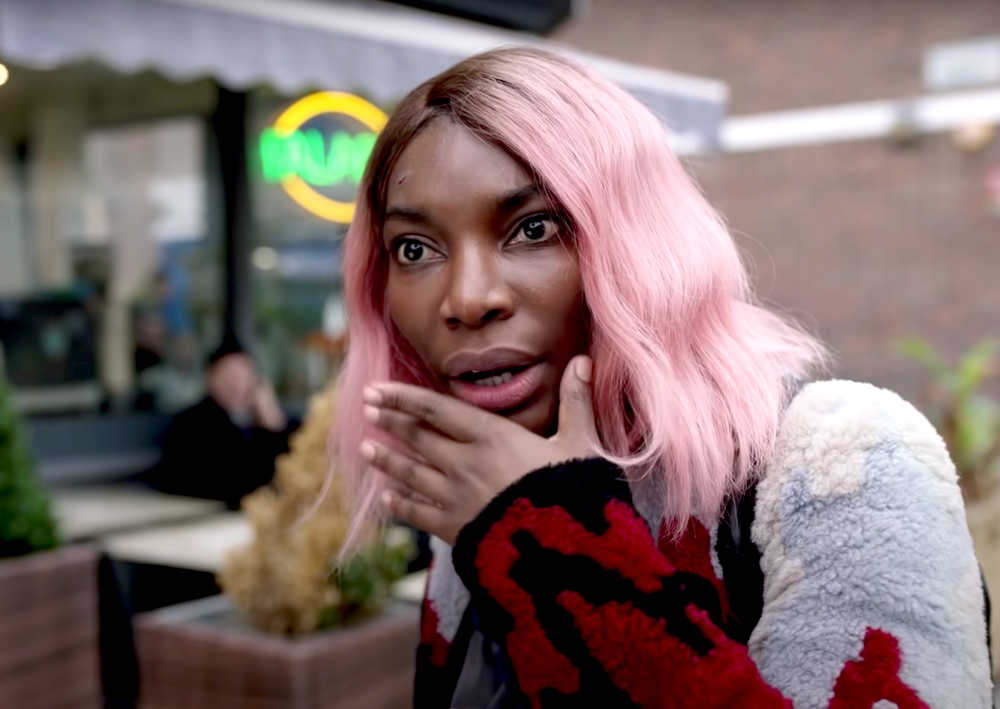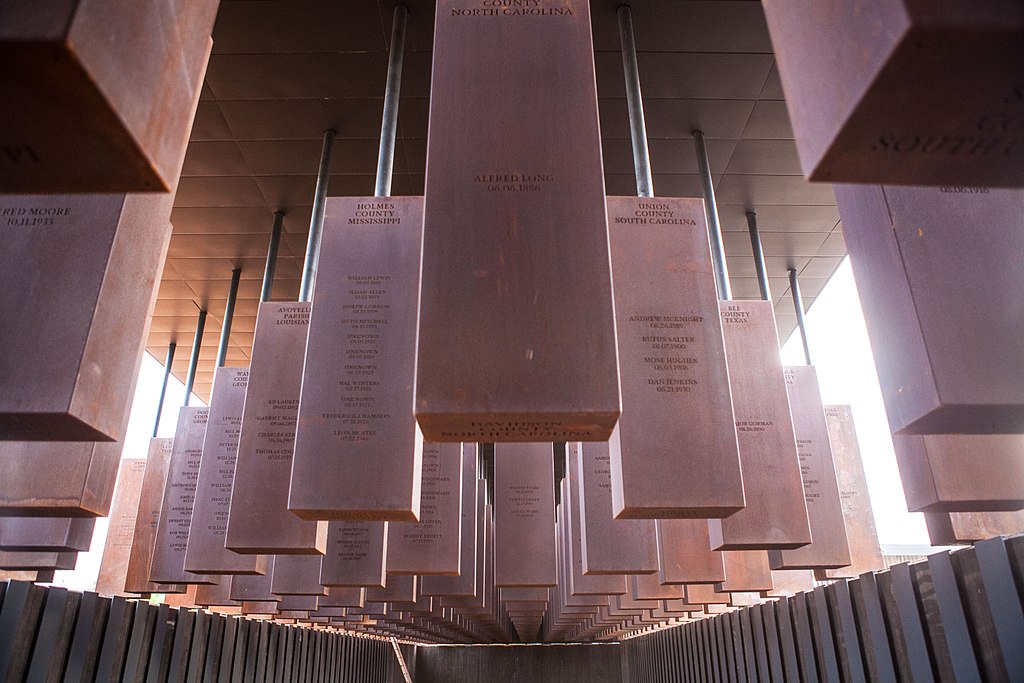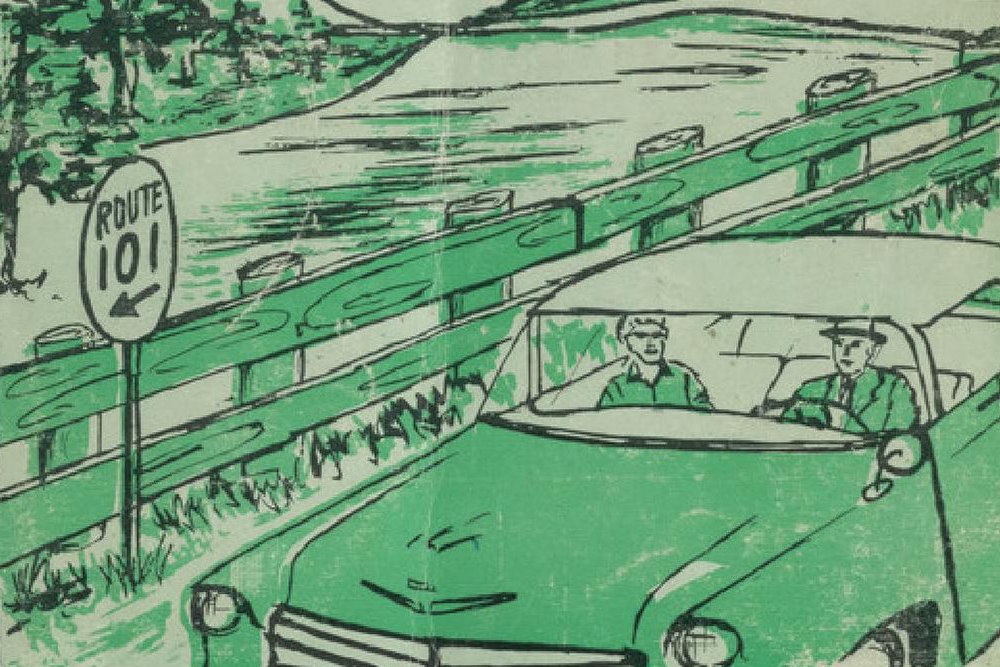Interviews
“What’s Mine and Yours” Navigates the Boundaries of Family and Race
Naima Coster's second novel looks at the family and community tensions that arise when two school districts are merged

I was lucky enough to read an early draft of Naima Coster’s second novel What’s Mine and Yours in February 2020. I was halfway through my pregnancy, and I saw everything through the lens of impending motherhood.
In the pages of What’s Mine and Yours, I found myself drawn to the central and complicated mother figures, Jade and Lacey May, who are both fighting for their children’s futures in drastically different ways. The narrative moves back and forth in time, starting in 1992, but what holds the storylines together is a county initiative to integrate students from the east side of town, which has a predominantly Black community, with the predominantly white west side of a town in the Piedmont of North Carolina. The integration is the narrative catalyst—but this deeply affecting book is about so much more. Coster tells the story of two families stitched together through circumstance and choice. This is a tender, fearless examination about love, legacy, and the bounds of family.
Naima Coster’s debut, Halsey Street, was a finalist for the 2018 Kirkus Prize for Fiction. Last year, she received the National Book Foundation’s “5 Under 35” honor and her sophomore effort continues to look at the connections between family and trauma. Over the course of a few days, Naima and I chatted about anti-Blackness and racism, motherhood and loneliness, writing Latinx characters, and how we make sense of our losses in life and in our fiction.
Crystal Hana Kim: How did you come up with this premise?
Naima Coster: I first thought of it after listening to “The Problem We All Live With”—two episodes of This American Life reported by the brilliant Nikole Hannah-Jones. She covers the integration program at a school district in Missouri—the one that Michael Brown attended, and I was so moved and challenged by her work. She includes audio footage of a meeting where white parents oppose the integration efforts, as well as the response of a Black girl who is in attendance and looking forward to the opportunity the integration will create for her. It left me wondering about how the effects of integrating a local high school would ripple through a community. What would happen between parents and their children? What would be the conversations around the dinner table? At after-school rehearsals? What tensions and intimacies would be created? How would the integration challenge the way people see themselves and what they’re entitled to? I had two characters I’d been thinking about—two mothers—and I decided to bring them and their stories into this situation to see what would happen.
CHK: Your novel also features this confrontation between Black and white residents. How did you decide to approach the racism and anti-Blackness inherent in the white residents’ opposition to the high school integration proposal? Did Hannah-Jones’s reportage influence the way you approached this subject matter?
NC: I was definitely thinking about all the coded language that is used to circulate the same old, racist ideas. I heard some of it on “The Problem We All Live With,” but I’ve also heard it my whole life—at school, at work, on the news, at parties. At the town hall about integration in the novel, Lacey May grandstands about how much she’s fought for her girls in order to argue that her kids deserve something that other kids don’t. She brings up this idea of merit as a way to reject the reality of her privilege. She believes she’s gotten everything she has through her own character and individual effort, and she thinks it’s right that other families have far less. Other parents at the meeting talk about being colorbind or that they don’t see race to dodge the implications of their position. They suggest that the worst thing you could do is call somebody racist and manage to make it seem as if they’re the ones being persecuted. It’s very gaslighting and strategic.
CHK: I’ve experienced that gaslighting time and again in my own life. On the opposite side of this integration debate is Jade, who fiercely advocates for her Black son Gee to attend Central High. How did you view Lacey May and Jade when writing?
The question I’m always turning over in my work is, ‘How do we live together?’ And the answer to that question is shaped so much by what we’ve inherited.
NC: I think about my characters always in relation to one another. They aren’t who they are in a vacuum. When I create characters, I am trying to get a handle on the web of complicated interpersonal dynamics that have shaped who they are. With Lacey’s daughters, the Ventura sisters, I thought a lot about how the three of them relate to each other and to each of their parents. And with Jade and Gee, I thought a lot about their relationships to themselves and how that contributes to the trouble they have connecting as mother and son. They’re both carrying so much and have lost so much. As a writer, I’m very interested in trauma, largely because I live with it every day: I often feel limited by things that have happened to me or are a part of my family story, but I’ve also figured out and am figuring out ways of surviving and reckoning. The question I’m always turning over in my work is, “How do we live together?” whether that’s in a marriage or in a high school or in a city. And the answer to that question is shaped so much by what we’ve inherited.
CHK: Lacey May is white, and she insists that her three half-Latinx daughters are white. This tension brought up interesting questions in the book about what it means to be a person of color, the relationship between race and ethnicity, and what it means to be Latinx. How did you decide on the Ventura sisters’ background?
NC: I identify as Latinx and yet I am constantly perplexed by the meanings of Latinidad, the boundaries it draws, the ways it’s constructed. The Ventura girls created an opportunity for me to parse through many of my own questions. It’s not uncommon in my Caribbean and Latinx family for relatives or siblings to all identify differently and present differently, and this is true also of the sisters in the novel. Noelle is white-presenting, Margarita appears ethnically ambiguous, and Diane is brown and regularly seen as Latina. But the way others see them doesn’t always align with how they see themselves. Noelle, for instance, strongly identifies as a person of color. Just charting the sisters’ movement through the world and their relationships to one another, I got to ask, What’s it like to be Latinx in North Carolina? What does it mean to be Latinx the further you get from the source of that heritage—the language, the parent, the place? When we say someone is white and Latinx, what are we talking about—their ancestry, their privilege, their presentation in public? Which public? At which point of time? Does it matter how they self-identify? What are the points of solidarity and shared experience between Latinx communities and other communities of color? The points of tension?
CHK: You’re working with a larger cast and a longer time span than your first novel. How was writing this different from the first? Did you have strategies for keeping track of all these lives?
How would integration challenge the way people see themselves and what they’re entitled to?
NC: The process for What’s Mine and Yours was wholly different from Halsey Street. I spent about two years thinking about the novel before putting any words to paper. I thought about Jade and I thought about Lacey May, and I thought about the premise. Since I knew I had such a large cast—the book includes nine points of view overall—I spent a lot of time writing about each character, their preoccupations and desires, before I started drafting. Also, this novel spun out unexpectedly from a short story I’d written, “Cold,” about Lacey May struggling to keep the heat on for her daughters while her husband is away. Although it has nothing to do with the integration plot, that story gave me a set of themes for the book: motherhood and loneliness, rifts within families, the stories we tell ourselves to make sense of our hardship, and how parents set out about securing their childrens’ futures, and the costs to both them and their kids along the way.
CHK: I love when a short story sparks new currents of thought that can then be expanded in novel form. You mentioned motherhood and loneliness. As a new mother myself, I was deeply drawn in by this theme. How has motherhood impacted your writing, if it has at all?
NC: I finished the book and sent it off to my agent a week before my due date! So, it was this interesting process where I wrote the book while I was pregnant and then I rewrote it while my daughter was a baby. First, I’ll say, that I can’t recommend being on deadline for a book during the first year of motherhood. It was very stressful, and I often felt squeezed. But rewriting the book while I was in the thick of new motherhood was really interesting. I had a much deeper sense of how difficult the postpartum period can be physically and emotionally, and how the needs of mothers are so often made invisible by society and often by the people nearest to them. I was able to use all of that. And every time I sat down to work on the book, I had to confront the tension of wanting to be with my daughter and also wanting to tend to myself through writing. I think that tension is something all the mothers in the book must face. How do I look after my children, how do I make sure they’re set up for a good life, when I also want to tend to my own life and desires? How do I do that without support or without good models for what it means to love yourself and to love a child at the same time?
CHK: A week before your due date! Congratulations. That is a feat. You mentioned “the stories we tell ourselves to make sense of our hardship.” How does this play out in your novel and why did you want to investigate this idea?
The two families in the book have suffered tremendous losses. And they create narratives to make sense of what’s happened to them.
NC: The two families in the book have suffered tremendous losses. And they create narratives to make sense of what’s happened to them, who they are, and to find reasons to keep living. The story Jade tells herself is that no matter how much she and her son have lost, their futures don’t have to be ruined. It’s a story she tells herself out of love and also fear. Lacey May tells herself the integration is jeopardizing her children’s future because it’s easier for her to focus on that imagined threat than to deal with the ongoing instability of the girls’ father and how that affects them. And, like many people who have benefited from systemic racism, she wants to believe she’s rightfully earned everything she has. And then there are the children who learn to see themselves one way as kids and carry that view into adulthood. Diane sees herself as a peacemaker, so she tries to hide parts of herself as she grows so as not to make waves. Margarita sees herself as unloved in comparison to her sisters and so she tries to make herself remarkable, impossible to ignore. And Noelle feels a lot of rage and disapproval toward her mother, so it’s painful to admit the way she winds up mimicking some of her choices and behavior. If you’re friends with anyone for long enough, you begin to see that the things they say about themselves out loud don’t always map onto what you know of them. It’s intimacy that uncovers those contradictions and sticky parts. I try to create that intimacy with my characters, to write them in a way that the reader becomes like a very good friend, who knows all their bullshit and inconsistencies, but remains close to them anyway.
CHK: It seems like the stories we tell ourselves to make sense of our hardship is directly tied to the tension of “rifts within families.” As adults, Gee and Jade have a strained relationship, as does Lacey May with her daughters. This fracturing between parents and children was also present in your first novel Halsey Street. What draws you to this theme?
NC: I’ve always felt alienated from uplifting platitudes about family because they haven’t felt true to my life. And I know so many people for whom they don’t ring true either. I suppose in my fiction I’m always trying to lean into some of those discomfiting realities—that home isn’t always a safe place, families aren’t always close, people who love each other aren’t always able to reach an understanding. I’ve been grateful every time I’ve read a book, whether fiction or memoir, in which family relationships are complicated, unstable, or strained. And so I try to be honest in my own work about how hard it can be to be in a family.









